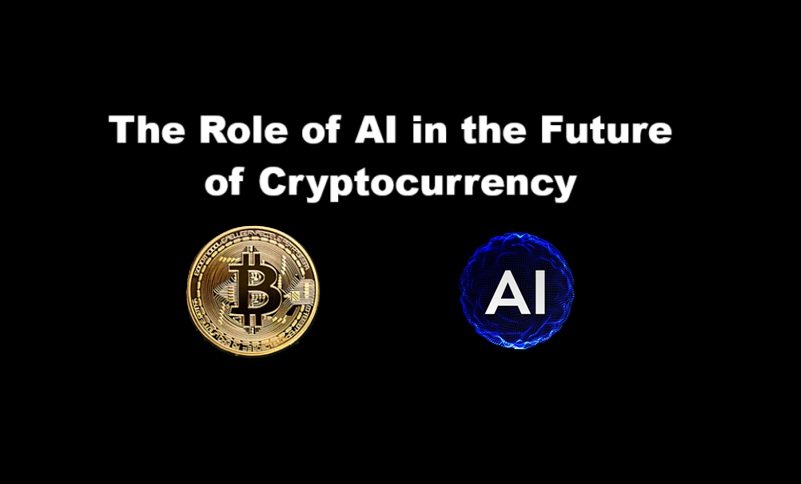
Table of Contents
- Introduction
- Understanding AI and Cryptocurrency
- AI in Crypto Trading and Market Prediction
- Fraud Detection and Security Enhancements
- AI in Smart Contracts and Decentralized Applications (dApps)
- Blockchain Scalability and Optimization with AI
- AI-Powered Portfolio Management
- Sentiment Analysis and Social Listening in Crypto
- Real-World Projects Integrating AI and Crypto
- Challenges and Risks of Combining AI with Crypto
- The Regulatory Landscape
- The Future: Toward Fully Autonomous Crypto Ecosystems
- Conclusion
- FAQs
1. Introduction
The convergence of artificial intelligence (AI) and cryptocurrency is not just a buzz—it’s the next big leap in digital finance. Both AI and crypto are disruptive technologies, and together they promise to transform financial systems, enhance blockchain operations, and automate trading with unprecedented accuracy.
2. Understanding AI and Cryptocurrency
What is Artificial Intelligence?
AI refers to machines or software mimicking human intelligence—learning, reasoning, and self-correcting.
What is Cryptocurrency?
Cryptocurrency is a decentralized digital currency secured by cryptography and typically built on blockchain technology.
The integration of AI into cryptocurrency aims to solve critical challenges like volatility, scalability, fraud, and user experience.
3. AI in Crypto Trading and Market Prediction
AI is revolutionizing crypto trading through:
- Predictive analytics: AI analyzes historical price data and real-time signals to forecast trends.
- Algorithmic trading bots: Platforms like 3Commas, Cryptohopper, and others use AI-powered bots to execute trades automatically.
- Risk management: AI dynamically adjusts strategies based on market volatility and liquidity.
🧠 Example: AI tools can predict short-term price movements using neural networks and reinforcement learning.
4. Fraud Detection and Security Enhancements
Crypto is often targeted by hackers and scammers. AI helps by:
- Detecting unusual transaction patterns
- Blocking phishing attacks and account takeovers
- Analyzing blockchain behavior to identify potential Ponzi schemes
AI models like anomaly detection and behavioral analytics play a major role in keeping DeFi and exchanges secure.
5. AI in Smart Contracts and dApps
AI enhances smart contracts in several ways:
- Context-aware smart contracts: Contracts that adjust conditions based on real-world data (e.g., weather, stock prices)
- Autonomous decision-making: AI agents can interact with smart contracts to negotiate terms or execute payments
In dApps, AI personalizes user experience, adjusts UI/UX dynamically, and handles natural language queries.
6. Blockchain Scalability and Optimization with AI
Scalability is a bottleneck in blockchain networks like Bitcoin and Ethereum.
AI helps by:
- Optimizing consensus mechanisms
- Reducing energy consumption in mining (green AI mining)
- Dynamic adjustment of block sizes and transaction processing rates
For example, researchers are using machine learning models to simulate and optimize sharding algorithms.
7. AI-Powered Portfolio Management
AI tools help investors by:
- Analyzing user risk profiles
- Rebalancing portfolios automatically
- Generating personalized insights and investment suggestions
Robo-advisors are now appearing in crypto apps, offering a similar experience to traditional fintech platforms like Wealthfront or Betterment.
Are you interested in AI-Powered Portfolio Management, please explore Bitcoin Prime.
8. Sentiment Analysis and Social Listening in Crypto
Crypto markets are heavily influenced by news, tweets, and public sentiment.
AI scrapes data from:
- Twitter, Reddit, Telegram groups
- Financial news portals and forums
- Google Trends
It uses natural language processing (NLP) to gauge public mood and correlate it with price fluctuations.
9. Real-World Projects Integrating AI and Crypto
Some noteworthy examples:
- Numerai: A hedge fund powered by crowdsourced AI models using crypto incentives
- SingularityNET: A decentralized AI marketplace using the AGIX token
- Fetch.ai: Building decentralized AI agents for supply chains and smart cities
- Ocean Protocol: Enables sharing of AI datasets securely on blockchain
10. Challenges and Risks of Combining AI with Crypto
Despite the potential, there are serious concerns:
- Data privacy: AI needs data; blockchain promotes transparency—balancing both is tough.
- Ethical AI use: Unregulated AI agents could cause flash crashes or manipulate markets.
- Black-box models: Many AI models are opaque, making auditing difficult in decentralized ecosystems.
11. The Regulatory Landscape
Global regulators are just starting to address AI + crypto:
- EU’s MiCA and AI Act (in development)
- India’s stance: Currently ambiguous, but cautious
- U.S. SEC and CFTC: Focused more on crypto compliance; AI remains unregulated but watched
Governments are exploring CBDCs (Central Bank Digital Currencies) and how AI can help monitor transactions for anti-money laundering (AML).
12. The Future: Toward Fully Autonomous Crypto Ecosystems
Imagine this:
- AI agents autonomously earning, spending, and investing crypto
- Blockchain-based AIs negotiating smart contracts with each other
- AI-enhanced DAOs (Decentralized Autonomous Organizations) governing financial systems
This is not science fiction—it’s under development.
13. Conclusion
The marriage of AI and cryptocurrency has the power to reshape global finance. While challenges exist, the synergy between learning algorithms and decentralized networks is unlocking new possibilities in trading, governance, and privacy.
Early adoption and responsible innovation will determine how impactful this fusion becomes in the coming decade.
14. FAQs
Q1: Can AI predict crypto prices accurately?
AI can identify patterns and forecast trends, but due to the volatile nature of crypto, it’s not 100% accurate.
Q2: Is AI used in crypto mining?
Yes, AI can optimize energy usage, hardware performance, and profitability in crypto mining.
Q3: Are there AI-based crypto trading platforms?
Yes. Popular ones include Pionex, Bitsgap, and TradeSanta.
Q4: What is the risk of using AI in DeFi?
Mainly lack of regulation, over-automation, and unpredictable model behaviors.
Disclaimer: The information provided in this article is for educational and informational purposes only and should not be considered financial, investment, or legal advice. Cryptocurrency and AI technologies involve significant risks and may not be suitable for all investors. Always conduct your own research and consult with a qualified financial advisor before making any investment decisions. Bharat Articles and its authors do not endorse or guarantee the accuracy of any third-party platforms, tools, or services mentioned in this content. This article may contain sponsored links. Please use discretion when clicking on external links.





